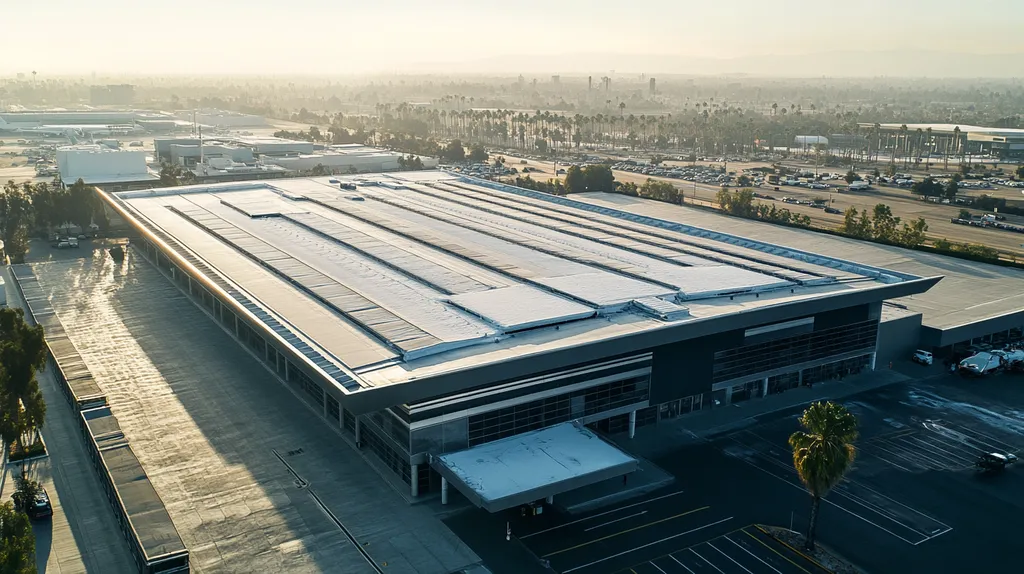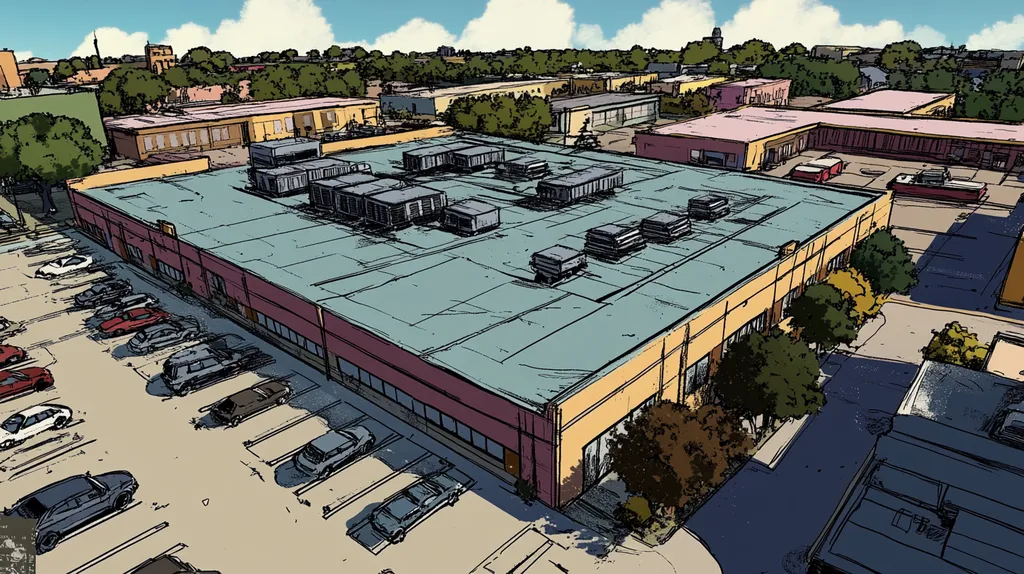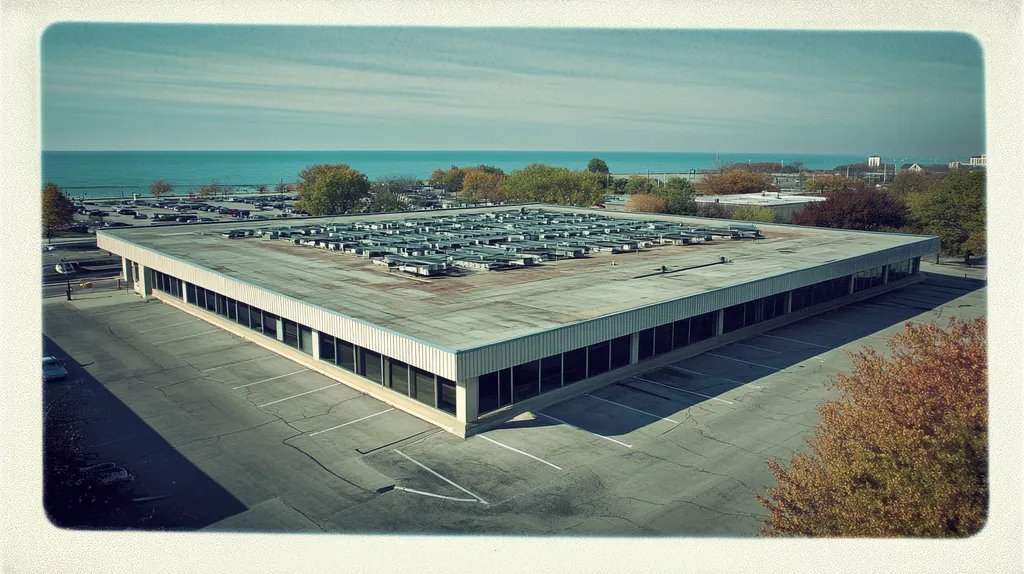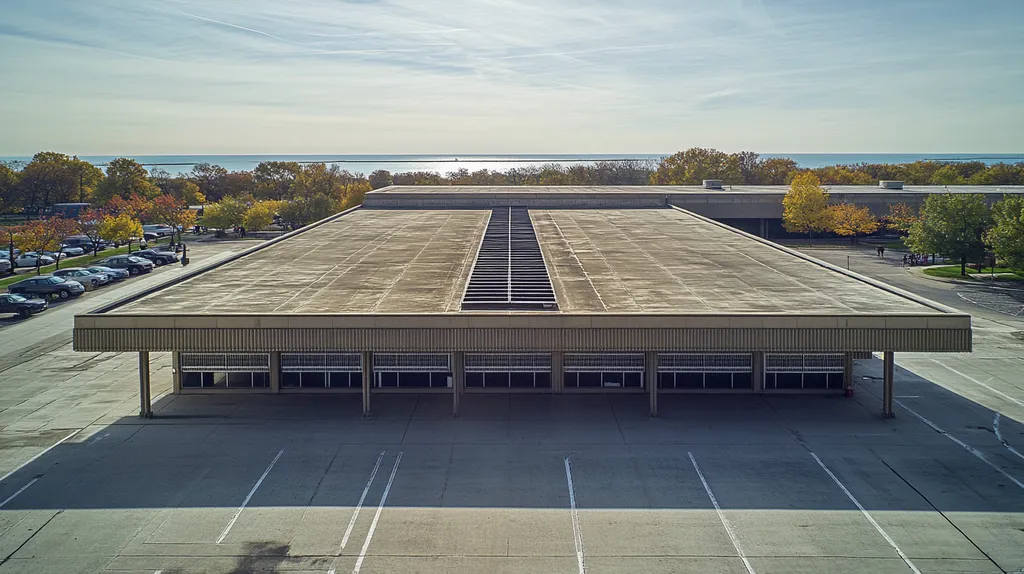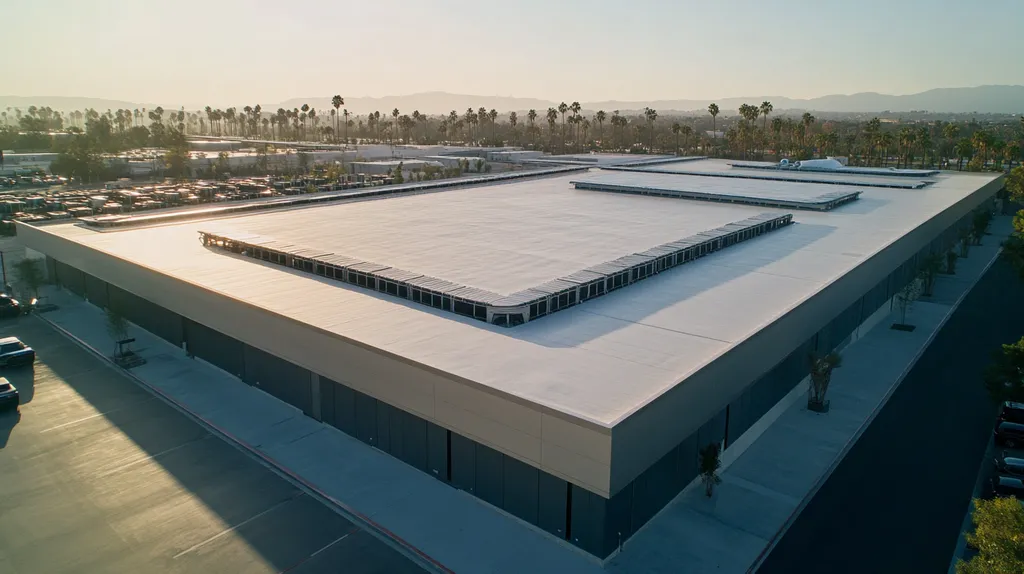While skylights have long been touted as energy-saving heroes in commercial roofing, recent data suggests they may be falling short of their promise. Studies show that up to 40% of skylight installations actually increase energy costs due to poor design and implementation.
From inadequate insulation to missed opportunities in natural lighting, the gap between skylight potential and reality continues to widen. Property owners investing in these “sustainable solutions” often find themselves with a glass ceiling of problems.
This analysis challenges conventional wisdom around skylight efficiency, examining systemic issues and presenting data-driven solutions that bridge the divide between expectation and performance.
SECTION 1: CURRENT PRACTICES
In an era where sustainability is more than just a buzzword, commercial skylights are emerging as powerful allies in the battle for energy efficiency. However, a surprising number of installations falter due to poor practices and material choices, undermining their potential benefits. Property owners must navigate these challenges to transform their buildings into energy-efficient powerhouses and unlock significant cost savings.
Common Installation Methods
Commercial skylight installations often rely on outdated techniques that don’t account for the unique complexities of modern roofs. Many facilities employ standard framing methods, which can open the floodgates to air leaks and thermal inefficiencies—defeating the purpose of adding skylights.
Attention to detail can often get lost in the shuffle. Professionals may neglect critical sealing and insulation steps, resulting in a significant drop in the anticipated energy efficiency benefits of these installations. Precision and adherence to best practices are essential for ensuring that skylights actually contribute to energy savings.
Even widely used skylight configurations can be victims of stagnation, failing to adapt to newer energy codes or evolving needs. By sticking to generic designs, properties miss out on cutting-edge techniques that could supercharge energy performance. Tailoring solutions to align with a building’s architectural features can make a transformative difference in overall efficiency.
The stakes are high. Attention to the installation process, combined with a deep understanding of each building’s specifics, can empower property owners to fully capitalize on the energy efficiency advantages that skylights can provide.
Standard Skylight Materials
Despite their potential, many commercial skylights are constructed from materials that skimp on energy optimization. Common choices, like plastic and glass, can vary remarkably in quality and insulating properties, making it vital to select options that promote both natural light and thermal performance.
While polycarbonate and acrylic skylights might seem attractive due to their lightweight design, they often fail to shine in the energy efficiency department. During hot summer months, these materials can allow excessive heat gain, diminishing any potential savings. Property owners must weigh the balance between enjoying sunshine and maintaining optimal thermal comfort when picking skylight materials.
On the other hand, glass skylights—especially those boasting low-emissivity (low-E) coatings—can provide superior energy efficiency, although they might come with a heftier price tag. Understanding the long-term savings associated with investing in higher quality materials can help justify the initial outlay and provide benefits down the line.
Constructing skylights from high-performance materials is non-negotiable for unlocking their energy efficiency potential. Scrutinizing each material’s performance over time versus its upfront cost will empower property owners to make smarter, more cost-effective decisions regarding their commercial roofs.
Typical Energy Efficiency Claims
When it comes to energy efficiency, many claims surrounding skylights resemble the fine print in a sales contract—suspicious and often lacking rigorous validation. Manufacturers tout their products based on ideal conditions that rarely occur in practical applications, leaving property owners disillusioned when the savings don’t add up.
Some skylight systems are branded as “energy-efficient” without considering the crucial roles of local climate, proper installation, and orientation. These claims often overlook seasonal variations that profoundly affect actual energy consumption. Property owners must sift through these factors before making purchasing decisions that impact their bottom line.
Additionally, standardized testing methods may not reflect the unique variability found within commercial environments. Understanding what goes into energy efficiency claims can save property owners from some unwanted regret and help them navigate misleading advertisements. Recognizing local environmental conditions is paramount in evaluating the anticipated benefits.
Insisting on transparency regarding energy efficiency claims empowers property owners to make informed choices. By closely examining each skylight’s performance metrics through the lens of their specific facility, they can make decisions that lead to remarkable energy savings and improved operational efficiency.
SECTION 2: SYSTEMIC ISSUES
The allure of skylights in commercial roofing is hard to resist; they promise to brighten spaces and curb energy costs. But lurking beneath this shiny exterior are systemic issues that can secretly rob buildings of their energy efficiency. Inadequate insulation, maintenance hurdles, and the specter of water leakage loom large, underscoring the importance of a thorough approach. Neglecting these critical factors can lead not only to inflated expenses but also to compromised structural integrity.
Inadequate Insulation Problems
One of the biggest culprits in the skylight saga is inadequate insulation. Too often, skylight installations overlook the thermal properties imperative for maximizing energy efficiency. When skylights are left uninsulated or poorly insulated, they can suffer heat loss in the winter and invite excessive heat gain during the summer, completely negating their intended benefits.
This thermal misconduct can inflate heating and cooling bills, transforming anticipated savings into financial pitfalls. Buildings that lack proper skylight insulation risk not just energy inefficiency but also a shortened lifespan for the roof due to harmful temperature fluctuations.
Unfortunately, building codes often provide insufficient guidance on this vital aspect of skylight installation. As a result, many designs prioritize visual appeal over functional soundness, leaving properties exposed to energy inefficiencies.
For property owners, what may appear as a minor investment in skylights can morph into significant long-term costs if insulation is overlooked. A proactive understanding of this issue is essential for informed decision-making that truly enhances energy efficiency.
Maintenance and Repair Challenges
Skylights may seem like set-and-forget installations, but they actually require a commitment to regular maintenance. Their elevated position can make inspection and upkeep challenging, leading to a perfect recipe for neglect. Over time, this oversight can degrade energy efficiency and contribute to building damage.
Facility managers may mistakenly believe skylights are robust enough to withstand the elements without regular check-ups. This complacency can lead to ignored repairs that are vital for optimal energy retention. Dust and debris can accumulate, obstructing the natural light skylights are supposed to provide, ultimately prompting a reliance on artificial lighting.
Failure to maintain skylights not only dissipates potential energy savings but also adds unforeseen operational costs. Higher energy bills can quickly eclipse any initial savings enjoyed from installing skylights.
For energy systems to operate efficiently, integrating regular maintenance into the operational plans is crucial. Acknowledging this maintenance challenge is a key step in fully reaping the benefits skylights have to offer.
Potential for Water Leakage
Water leakage ranks as a significant concern with skylights, creating vulnerabilities in roofing systems that dampen energy efficiency. Without meticulous installation and proper sealing, skylights can become gateways for water intrusion, risking serious structural damage.
Leaks can degrade insulation, resulting in diminished thermal performance throughout the building. This directly leads to inflated energy costs and necessitates expensive repairs for both roofing and interior structures. Additionally, moisture invasion can foster mold and mildew growth, jeopardizing indoor air quality.
Research indicates that water damage remains one of the primary causes of roofing system failures. Property owners and facility managers must consider this risk seriously when contemplating skylight installations.
Adopting a proactive strategy—complete with routine inspections and quality installations—can significantly reduce the chances of leaks. Awareness of this potential challenge is essential for unlocking the long-term advantages that commercial roof skylights can provide.
SECTION 3: MISSED OPPORTUNITIES
In the quest for energy efficiency, many commercial property owners often fall prey to tunnel vision, fixating solely on direct energy savings from skylights. This narrow approach blinds them to the broader benefits that these installations can offer, including enhanced natural lighting, improved ventilation, and pleasing aesthetics. Missing out on these advantages not only compromises the overall performance and comfort of the facility but also leads to unnecessary operational costs.
Underutilized Natural Light Benefits
Natural light is more than just a nice touch; it can dramatically reduce reliance on artificial lighting in commercial spaces. The U.S. Department of Energy reports that harnessing natural daylight can slash lighting energy consumption by a staggering 70% to 80%. This reduction means lower electricity bills, allowing budget-conscious property owners to allocate funds to other operational needs.
Moreover, ample exposure to natural light fosters not only a more stimulating work environment but also boosts employee well-being. Research shows that individuals working in naturally lit settings experience 51% fewer symptoms of eyestrain and 63% reductions in drowsiness. Maximizing daylight can transform a lethargic workplace into a hub of productivity.
To truly harness these benefits, however, skylights must be thoughtfully positioned and sized. Poorly designed installations can lead to unwanted heat gain or glare, ultimately undermining energy efficiency. A comprehensive design approach is essential to optimize the benevolent effects of natural lighting.
Incorporating skylights with high-performance glazing serves as a smart strategy to minimize these drawbacks. Properly executed, these installations enhance energy efficiency while cultivating a more inviting indoor atmosphere, proving that the advantages of natural light go well beyond mere energy savings.
Overlooked Ventilation Advantages
Fresh air is essential for a healthy indoor environment, yet it is often neglected in commercial roof designs. Skylights have versatile roles—their design can facilitate natural ventilation, allowing stale air to escape while ushering in refreshing breezes. This natural airflow not only enhances comfort but also lightens the load on mechanical ventilation systems.
Statistics reveal that effective natural ventilation can significantly lower energy consumption by alleviating pressure on HVAC components. As reliance on mechanical cooling diminishes, businesses stand to benefit from reduced energy expenses and prolonged equipment lifespan.
Furthermore, integrating venting skylights elevates indoor air quality. High-quality air is directly linked to employee health, productivity, and satisfaction; facilities that prioritize ventilation through skylights promote wellness in the workspace.
Utilizing skylights as multifunctional installations magnifies their benefits while fostering sustainability. Facility managers who embrace these strategies can enjoy substantial operational advantages.
Neglected Aesthetic Enhancements
While energy efficiency ranks high on the priority list, the aesthetic charm of skylights deserves equal attention. A well-implemented skylight system can elevate the architectural appeal of any commercial structure. Eye-catching designs not only enhance aesthetics but can also boost occupancy rates, particularly in competitive real estate markets.
Research shows that buildings flaunting attractive features often command higher rental rates. Potential tenants are drawn to the immediate advantages of natural light and appealing layouts, making it a vital consideration in decision-making.
Skylights can also bolster brand image and company values. A facility embracing natural light signals a commitment to sustainability and innovation, enhancing its reputation among clients and stakeholders alike. The improved visibility from the exterior can attract potential visitors, adding yet another layer of value.
Failing to appreciate the aesthetic benefits of skylights limits opportunities to create an inviting environment. Organizations should not only seek energy efficiency but also consider the visual and emotional resonance their facility design can have on employees and customers alike.
SECTION 4: ROOT CAUSES
The potential for skylights to enhance energy efficiency in commercial roofs is tantalizing. Yet, many of these installations miss the mark due to fundamental flaws in design, material selection, and installation practices. Research indicates that improperly designed skylights can lead to increased energy costs, putting financial pressure on property owners and facility managers. Understanding these root causes is essential for any property owner looking to optimize their skylight applications.
Design and Planning Flaws
Design is the backbone of successful skylight implementation, yet poor design remains a common pitfall. Many skylights are not sized appropriately for their environments. Whether too large or too small, they struggle to manage natural light effectively, leading to inflated energy usage.
Moreover, the lack of thoughtful planning often ignores climatic nuances. Skylights not tailored to handle local weather conditions can become sources of unwanted heat gain in summer and significant heat loss in winter, further burdening HVAC systems.
Embracing advanced energy modeling during the design stage can greatly mitigate these issues. Yet, too often, architects fall back on outdated assumptions, undermining a building’s overall lighting and energy efficiency needs.
Ultimately, oversight in design and planning can compromise a project, costing businesses far more than they anticipated. By refining these processes, the journey toward energy efficiency can be truly realized.
Material Selection Shortcomings
The choice of materials for skylights directly influences their energy performance. Unfortunately, many property managers prioritize aesthetics over thermal functionality, opting for inferior glazing materials that fail to insulate effectively.
Single-pane glass, commonly used in skylights, falls short compared to double- or triple-pane alternatives. This oversight can lead to steep heating and cooling expenses, ultimately counteracting the benefits of natural light.
Additionally, neglecting UV protection in skylight designs can induce excessive indoor heat, causing HVAC systems to strain under fluctuating temperatures. Ensuring a focus on energy-efficient materials is crucial in maximizing overall performance.
Investing in higher-quality materials now can unlock long-term savings and improved occupant comfort. In the world of skylights, the right material choices carry more weight than may initially appear.
Installation Quality Variations
The caliber of skylight installation can vary dramatically from one contractor to the next, impacting energy efficiency significantly. Poor installation often results in gaps, leaks, and inadequate sealing, which allow conditioned air to escape and drive energy costs higher.
For instance, poorly installed flashing invites water infiltration, risking damage not only to the skylight but to the surrounding roof structure as well. This issue presents potential operational inefficiencies and liability for property owners.
Furthermore, when installers fail to align skylights with a building’s energy strategy, the potential benefits of natural light can be entirely squandered. A well-executed installation should integrate seamlessly into the building’s overall energy efficiency objectives.
To counter these challenges, property owners benefit from engaging experienced contractors who prioritize quality. This proactive strategy can help prevent costly oversights and ensure skylights enhance the building’s energy performance rather than detract from it.
DATA DRIVEN EVIDENCE
For commercial property owners, grasping the true impact of skylights on energy efficiency is imperative. A study from 2019 indicated that skylights could reduce energy costs by up to 30% in the right climates. Yet, not everyone is on board with this perspective. This section explores key energy consumption studies, cost-benefit analyses, and user satisfaction surveys, all aimed at illuminating the actual pros and cons of skylights in commercial roofing.
Energy Consumption Studies
Numerous studies paint a compelling picture of skylights’ influence on energy consumption. A thorough analysis found that commercial buildings with natural light sources slashed their lighting energy use by about 50%. However, this substantial decrease hinges greatly on the design and quality of skylight installation.
Crucially, some findings suggest that improperly installed skylights can lead to increased loads on HVAC systems due to heat gain, especially in warmer climates. This raises essential questions about whether the energy savings from skylights actually outweigh the extra cooling demands created. Property owners need to consider their specific conditions for informed decisions.
A recent report from the Department of Energy corroborates these mixed results, noting that while daylighting can enhance energy efficiency, it requires careful integration with existing systems. Therefore, every building owner must evaluate their unique environmental factors prior to committing to skylight installations.
Ultimately, while the promise of energy savings from skylights is enticing, the actual benefits can vary significantly, highlighting the need for further investigation and tailored approaches.
Cost-Benefit Analysis Findings
Cost-benefit analyses are essential for understanding the financial implications of skylight installations. A recent study suggested that the upfront costs for high-quality skylights could be recovered within five years through savings on energy bills. However, property owners often forget to factor in ongoing maintenance expenses linked to these installations.
In multiple case studies, constraints on budgets led to the selection of lower-quality skylights—units that frequently fail to deliver on promised energy savings. This oversight can translate to soaring operational costs down the line and risk undermining the intended benefits.
Moreover, analyses reveal that the type and size of skylights heavily influence overall cost-effectiveness. Larger skylights may provide increased natural light, but they can also result in higher insulation costs during colder months. Thus, conducting a detailed cost-benefit assessment specific to individual circumstances is crucial.
In conclusion, while the financial advantages of skylights can be significant, understanding the nuances of installation and maintenance is equally critical in maximizing return on investment.
User Satisfaction Surveys
User satisfaction surveys frequently highlight the subjective perks of installing skylights, showcasing reports of enhanced occupant satisfaction and productivity. For instance, a survey targeting employees in spaces flooded with daylight reflected a remarkable 20% increase in job satisfaction. This statistic is vital, as higher satisfaction can directly lead to better employee retention and lower turnover costs.
That said, not all feedback is glowing. Some users report discomfort stemming from glare or excessive heat. Without proper shading strategies in place, skylights can detract from the intended advantages, underscoring the importance of addressing these issues to fully capitalize on the benefits of natural lighting.
Furthermore, comprehensive feedback indicates that the aesthetic charm of skylights significantly elevates spaces, promoting a healthier work environment overall. Data suggests that buildings with skylights tend to enjoy higher occupancy rates, reinforcing their value beyond mere energy savings.
In summary, user satisfaction surveys reveal that while skylights enhance workplace environments, achieving success depends largely on addressing potential drawbacks to unlock their full potential.
SECTION 6: ALTERNATIVE SOLUTIONS
In the pursuit of energy efficiency, traditional skylights may not always meet expectations, leading property owners to believe that simply adding more natural light will equate to reduced energy costs. However, recent innovations in technology and installation practices offer powerful alternatives to enhance the effectiveness of skylights. By exploring these cutting-edge options, commercial properties can not only optimize energy savings but also elevate overall building performance.
Advanced Skylight Technologies
Emerging skylight technologies are truly revolutionizing energy efficiency in commercial buildings. High-performance insulated skylights now feature specialized coatings designed to regulate heat transfer effectively. This advancement can significantly reduce thermal bridging and bolster insulation—all while flooding spaces with inviting natural light.
Smart skylights, equipped with sensors, represent another leap forward in efficiency. These intelligent systems can automatically adjust their tint or open up based on changing weather conditions, helping maintain optimal brightness and comfort year-round. Such versatility not only enhances occupant satisfaction but also fine-tunes energy usage.
In addition, choosing polycarbonate or triple-glazed glass options can further improve durability and thermal efficiency. These materials have consistently outperformed traditional glass skylights by providing superior insulation and longevity.
By adopting these advanced skylight technologies, commercial property owners are likely to secure meaningful energy savings, ultimately reducing operating costs and enhancing the overall value of their buildings.
Optimized Installation Techniques
Effective installation techniques hold the key to unlocking a skylight’s true performance potential. A skylight installed poorly can lead to leaks and thermal inefficiencies that negate the benefits of added natural light. Thus, embracing advanced best practices during installation becomes vital.
Proper sealing methods ensure skylights resist water intrusion while minimizing airflow. This approach helps prevent energy loss and contributes to maintaining energy efficiency across the building. Regular training for installers on the latest techniques can elevate work quality across installation teams.
Moreover, incorporating adequate flashing and drainage systems not only enhances longevity but also diminishes repair costs. These additions protect roofing systems from unforeseen water damage, preserving the integrity of both the skylight and the underlying structure.
Ultimately, by optimizing installation practices, property owners can harness maximum energy efficiency from their skylights, safeguarding their investments while enjoying meaningful returns.
Integrated Building Systems Approach
Adopting an integrated building systems approach ensures that skylights function in concert with other energy-efficient features. By considering how skylights fit into the broader architectural design and systems of a building, property owners can create cohesive energy solutions.
For example, coordinating skylight placement with HVAC systems can significantly enhance indoor temperature regulation. Strategically positioned skylights reduce reliance on artificial lighting and heating, which can lead to substantial energy savings.
Furthermore, aligning daylighting strategies with energy management systems empowers facility managers to optimize lighting based on occupancy and time of day. This adaptive method allows for continuous monitoring and improvement of energy performance throughout the year.
By fully embracing an integrated systems mindset, commercial properties can position their skylights as pivotal components of their overall energy efficiency strategies, fueling sustainability and long-term savings.
Moving Forward
With commercial buildings accounting for 35% of U.S. energy consumption, the stakes for getting skylight implementations right have never been higher.
The data presents a sobering reality: while properly designed skylights can reduce lighting costs by up to 80%, nearly 40% of current installations actually increase energy expenses due to poor planning, subpar materials, and flawed execution.
The path forward requires embracing advanced technologies like smart sensors and high-performance glazing, while abandoning outdated installation practices that compromise efficiency.
For property owners, the message is clear: skylights can either be costly liabilities or powerful assets in the push for energy efficiency—the difference lies in understanding and implementing evidence-based best practices.
FREQUENTLY ASKED QUESTIONS
Q. How do installation practices affect commercial roof skylights?
A. Installation practices are crucial for skylight performance. Poorly executed installations can lead to air leaks, thermal inefficiencies, and missed energy savings. Attention to detail during the installation process is essential for maximizing the potential benefits of skylights on energy efficiency.
Q. What systemic issues affect industrial roof skylights?
A. Systemic issues such as inadequate insulation, maintenance challenges, and potential for water leakage can undermine the efficiency of skylights. Neglecting these factors can lead to inflated operational costs and may compromise the structural integrity of the roof.
Q. How can commercial property owners miss skylight opportunities?
A. Many property owners focus solely on energy savings and overlook other benefits like improved aesthetics and ventilation. This narrow focus can limit the overall effectiveness of skylights and miss opportunities for enhancing workplace comfort and productivity.
Q. What root causes lead to inefficient skylight installations?
A. Common root causes include poor design, inadequate material selection, and subpar installation quality. These flaws can increase energy costs, adding financial pressure on property owners. Being aware of these pitfalls is crucial for optimizing skylight performance.
Q. What does data-driven evidence say about skylights?
A. Data shows that skylights can cut energy costs by up to 30% in some climates. However, performance varies significantly based on factors like installation quality and building design, challenging the assumption that skylights are universally beneficial for energy savings.
Q. What alternative solutions improve efficiency for skylights?
A. Advanced skylight technologies, such as smart skylights with sensors and insulated materials, deliver superior performance. Additionally, optimized installation practices and integrated building approaches can enhance overall energy efficiency and effectiveness of skylights in commercial properties.
Q. How can skylight aesthetics impact commercial roof design?
A. Aesthetic considerations in skylight design can significantly enhance a building’s appeal and marketability. Attractive skylights improve occupant satisfaction and may even lead to heightened occupancy rates, making them a valuable asset beyond energy savings alone.

